Wuwei Tianti Mountain: The Perfect Escape for Nature Lovers and Adventurers
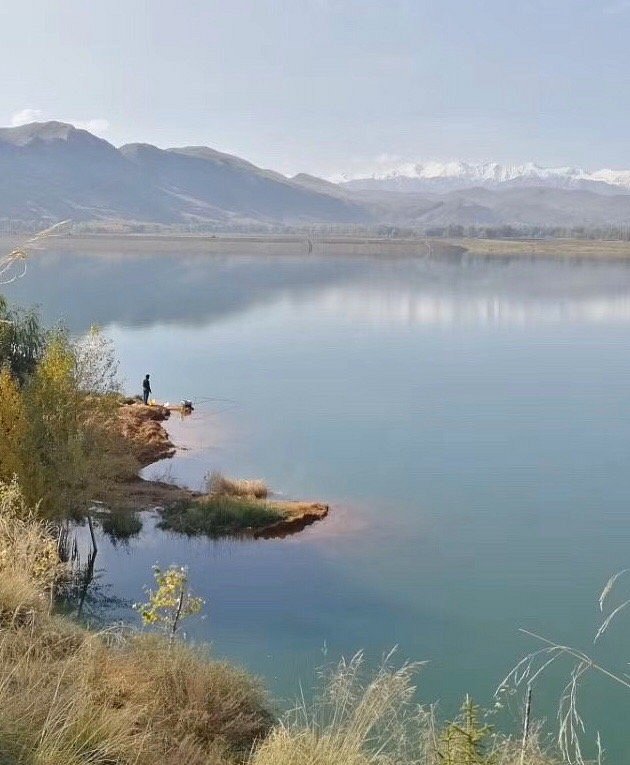
An Essential Guide to Visiting Wuwei Tianti Mountain
Nestled in the heart of Gansu Province, Wuwei Tianti Mountain (武威天梯山) offers a breathtaking blend of natural beauty and rich cultural heritage. This remarkable destination is renowned for its stunning rock-cut grottoes, which house exquisite Buddhist cave temples and statues that date back to the Tang Dynasty. As you embark on your journey to this enchanting locale, prepare to be captivated by the dramatic landscapes that serve as a backdrop to the ancient artistry carved into the mountainsides.
The Tianti Grottoes, a highlight of any visit, invite you to explore their intricate carvings and frescoes, remnants of a spiritual legacy that has withstood the test of time. With a history stretching back over a millennium, these caves are not only a testament to the artistry of their creators but also a window into the spiritual life of ancient China. Visitors can wander among the remnants of 19 caves, some of which have been lost to natural disasters, while others remain a source of awe and inspiration.
Beyond the grottoes, the surrounding area is equally enticing, offering scenic views of tranquil lakes and rugged mountains, perfect for photography enthusiasts and nature lovers alike. Whether you’re seeking a profound cultural experience or simply a serene escape from the hustle and bustle of everyday life, Wuwei Tianti Mountain promises an unforgettable adventure that will leave you with lasting memories. As you plan your visit, be sure to equip yourself with essential information and tips to make the most of this hidden gem in China’s diverse landscape.
In This Guide
- An Essential Guide to Visiting Wuwei Tianti Mountain
- The Rich History and Legends of Wuwei Tianti Mountain
- Main Highlights: What You Absolutely Can’t Miss
- Planning Your Visit: A Practical Guide
- Tickets: Prices, Booking, and Tips
- How to Get There: A Complete Transportation Guide
- Local Cuisine and Accommodation Nearby
- Frequently Asked Questions
- Final Thoughts on Your Trip
The Rich History and Legends of Wuwei Tianti Mountain
Nestled in the scenic landscapes of Gansu Province, Wuwei Tianti Mountain, also known as Tianti Shan, is a remarkable destination steeped in rich history and captivating legends. This area is not just a feast for the eyes; it tells a story that intertwines spirituality, artistry, and the natural beauty of China.
The history of Wuwei Tianti Mountain is closely linked to the Tianti Grottoes, a site that dates back to the Tang Dynasty (618-907 AD). These rock-cut grottoes were carved into the mountainside and served as important Buddhist temples and places of worship. Originally comprising 19 caves, the grottoes housed stunning statues and exquisite frescoes that depict Buddhist deities and scenes. However, time has not been kind to all of them; some caves suffered destruction due to natural disasters, including earthquakes, as well as the construction of a nearby water reservoir.
One of the most significant features of the Tianti Grottoes is the immense statue of Buddha Sakyamuni, which stands at an impressive 23 meters high. This majestic figure symbolizes the spiritual heart of the grottoes, attracting pilgrims and tourists alike. The surrounding caves also boast intricate carvings and murals that provide insight into the artistic styles and religious practices of the time, making this site a treasure trove for historians and art enthusiasts.
Discovered only about 70 years ago, the Tianti Grottoes have rapidly gained recognition as an essential cultural relic site. The site was declared a key cultural relic in 2001, and efforts to preserve and restore the grottoes continue to this day. Visitors can explore the main grotto, which dates back to the Tang Dynasty, while a newly built Culture Relics Exhibit Hall showcases artifacts and historical findings from the area.
As you traverse the landscapes around Wuwei Tianti Mountain, you may encounter local legends that add an enchanting layer to your visit. Tales of ancient monks who sought enlightenment in the caves, as well as stories of the mountain as a sacred site, have been passed down through generations. These legends enrich the experience, inviting you to imagine the lives of those who once walked these paths.
The breathtaking views from Tianti Mountain itself, with its dramatic cliffs and serene lakes, further enhance the allure of this historical site. The combination of nature and spirituality creates a sense of tranquility that is palpable, encouraging reflection and appreciation for the rich cultural heritage of the region.
In summary, Wuwei Tianti Mountain is not merely a destination; it is a portal into China’s profound history and spiritual legacy. Whether you are drawn by the artistry of the grottoes, the serenity of the landscape, or the ancient tales woven into the fabric of the mountain, this unique site offers an unforgettable journey through time and culture.
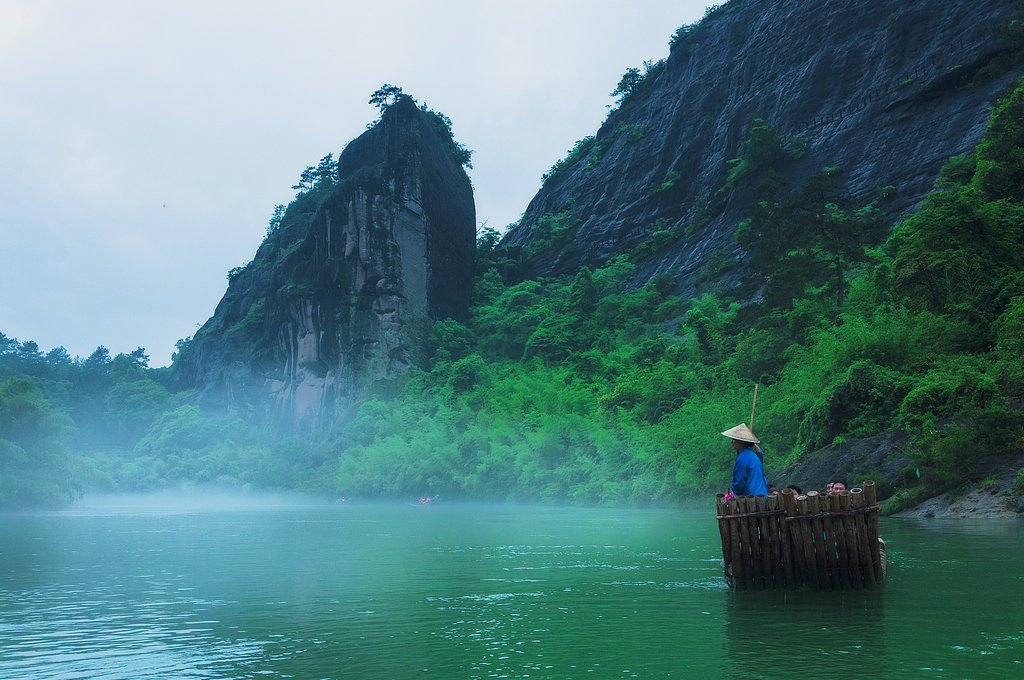
Wuwei Tianti Mountain.
Main Highlights: What You Absolutely Can’t Miss
When planning your visit to Wuwei Tianti Mountain (武威天梯山), you’re in for a treat! This stunning destination is rich in cultural history, breathtaking landscapes, and remarkable artistry. Here are the highlights you absolutely can’t miss:
Tianti Grottoes
The crown jewel of Wuwei Tianti Mountain is undoubtedly the Tianti Grottoes. This site is renowned for its magnificent rock-cut grottoes that date back to the Tang Dynasty. With 19 caves carved into the cliffs, visitors can marvel at the exquisite Buddhist cave temples and the detailed rock-carved statues that adorn them. Although some caves have suffered from natural disasters, the beauty of those that remain is nothing short of awe-inspiring.
- Must-See Features: Don’t miss the largest grotto, which stands an impressive 30 meters high and features a towering 23-meter statue of Buddha Sakyamuni, flanked by his disciples. The frescoes that decorate the grotto walls are also a must-see, showcasing the intricate artistry of ancient artisans.
Scenic Views
As you explore the grottoes, take a moment to soak in the stunning natural scenery that surrounds you. The juxtaposition of the colorful rock formations with the serene waters of the nearby reservoir creates a picturesque backdrop that is perfect for photography enthusiasts. The tranquility of the area provides an excellent opportunity for reflection and relaxation.
Cultural Significance
The Tianti Grottoes are not just a feast for the eyes; they also hold significant cultural importance. Considered one of the earliest and most important grotto sites in China, they predate other famous sites like the Yungang and Longmen Grottoes. This historical context adds a deeper layer of appreciation for the artistry and craftsmanship involved in their creation.
Local Delicacies
During your visit, don’t forget to try some local snacks! As you wander around the grottoes, keep an eye out for vendors selling fresh, hot beans and other local treats. Engaging with the local food scene adds another dimension to your experience and supports the community.
Accessibility
The Tianti Grottoes are located in Dengshan Village, about 50 kilometers south of Wuwei City. Be sure to plan your visit ahead of time, as the grottoes may be subject to seasonal closures or renovations. Checking online or contacting local tourism offices can save you from unexpected disappointments.
In summary, Wuwei Tianti Mountain offers a captivating blend of history, spirituality, and natural beauty. From the breathtaking grottoes to the serene landscapes, your visit is sure to be a memorable experience filled with moments of wonder. Make sure to include these highlights in your itinerary for an unforgettable adventure!
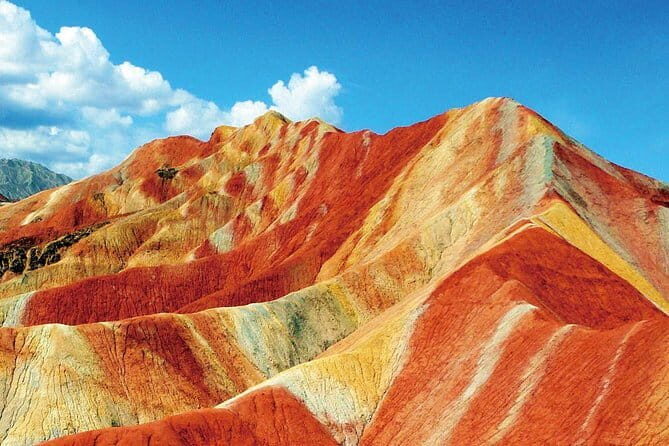
Wuwei Tianti Mountain.
Planning Your Visit: A Practical Guide
Practical Guide for Visiting Wuwei Tianti Mountain
Visiting Wuwei Tianti Mountain, home to the stunning Tianti Grottoes, is a unique opportunity to delve into China’s rich Buddhist heritage and admire breathtaking natural scenery. Here’s everything you need to know to make your visit unforgettable.
Getting There
Location:
The Tianti Grottoes are located in Dengshan Village, Zhonglu County, Liang Zhou District, Wuwei, Gansu Province. The site is approximately 50 kilometers south of Wuwei City.
Transportation:
– By Car: Renting a car or hiring a taxi is a convenient option, especially if you want to explore the area at your own pace. The drive from Wuwei City takes about an hour.
– By Bus: Public buses are available from Wuwei to the Tianti Grottoes. It’s advisable to check the local bus schedule in advance, as frequencies may vary. The journey typically lasts around 2.5 hours.
– Note: Ensure you check for any service interruptions, especially during renovations or seasonal changes.
Opening Hours
The Tianti Grottoes are open year-round from 12:00 AM to 11:59 PM, making it convenient for visitors to plan their trip either in the morning or late afternoon when the light is ideal for photography.
Admission Fees
Entry fees may apply, so it’s best to verify the current rates before your visit. In past reviews, visitors have mentioned a fee of around 30 RMB to access the cultural relics exhibit hall, which showcases artifacts and information about the grottoes.
What to Expect
The Tianti Grottoes feature impressive rock-cut temples and statues, some dating back to the Tang Dynasty. With 19 grottoes originally in the complex, be prepared for a mix of awe-inspiring Buddhist art and the remnants of structures that have suffered due to natural disasters.
-
Grotto Highlights: The largest grotto stands at 30 meters high and contains a colossal statue of Buddha Sakyamuni, surrounded by frescoes and smaller statues of his disciples. Be sure to explore the intricate details in the carvings and paintings, which reflect the artistic flair of ancient Chinese Buddhism.
-
Scenic Views: The location offers stunning views of the surrounding mountains and a picturesque lake, perfect for leisurely walks and photography.
Local Tips
-
Check for Closures: Before your visit, verify if any grottoes are closed for renovations. Some visitors have reported unexpected closures, which can disrupt plans.
-
Bring Snacks: While fresh local snacks, like hot beans, can be found at the site, it’s wise to bring along some refreshments, especially if you plan to spend several hours exploring.
-
Dress Appropriately: The weather can vary, so dress in layers and wear comfortable shoes suitable for walking on uneven surfaces around the grottoes.
-
Engage with Local Guides: If you have the chance, consider hiring a local guide who can provide deeper insights into the history and significance of the grottoes, enriching your experience.
Nearby Attractions
If time allows, explore other nearby attractions, such as:
– Tianfo Temple Grotto: A short distance away, offering more insights into local religious architecture.
– Leitai Park of Wuwei: Ideal for a relaxing stroll amidst nature.
Conclusion
A visit to Wuwei Tianti Mountain and its remarkable Tianti Grottoes is not just a journey through history, but also an encounter with the profound spiritual heritage of China. With careful planning and a spirit of adventure, you’re sure to have a memorable experience in this enchanting part of Gansu Province.

Wuwei Tianti Mountain.
Tickets: Prices, Booking, and Tips
Visiting the captivating Wuwei Tianti Mountain (武威天梯山) and its renowned Tianti Grottoes is an unforgettable experience steeped in history and culture. To ensure your trip is smooth and enjoyable, here’s a comprehensive guide to ticket prices, booking options, and helpful tips.
Ticket Prices
As of the latest information, tickets to the Tianti Grottoes are priced at 30 RMB per person. This fee grants you access to the grottoes, which boast stunning rock-cut statues and intricate Buddhist cave temples. However, it’s advisable to check for any updates on pricing or special promotions before your visit.
Booking Your Tickets
Tickets can be purchased on-site at the entrance to the Tianti Grottoes. Given the site’s popularity, especially during peak travel seasons, it’s a good idea to arrive early to avoid long queues. If you prefer the convenience of planning ahead, consider contacting local tour operators who may offer package deals that include transportation and guided tours.
Tips for a Successful Visit
-
Check Opening Hours: The grottoes are open 24 hours a day, but visiting during daylight hours is recommended for the best views and photography opportunities.
-
Plan Ahead: Occasionally, parts of the grottoes may be closed for maintenance or renovations. It’s wise to verify the status of the site on local tourism websites or through your accommodation prior to your visit to avoid disappointment.
-
Transportation: The grottoes are located in Dengshan Village, about 50 km south of Wuwei City. You can reach the site via taxi or local buses. If taking a taxi, confirm the fare beforehand, as it can vary significantly.
-
Bring Cash: While some vendors may accept digital payments, it’s best to have cash on hand for smaller purchases, such as snacks or souvenirs sold by local vendors near the grottoes.
-
Timing Your Visit: Early morning or late afternoon visits often provide the best light for photography and a less crowded experience.
-
Dress Comfortably: Wear comfortable shoes, as you’ll be walking and possibly climbing in the area. Lightweight clothing is also advisable, especially during the warmer months.
By keeping these tips in mind and preparing accordingly, you can fully immerse yourself in the breathtaking beauty and historical significance of the Wuwei Tianti Mountain and its Grottoes. Enjoy your journey into this remarkable slice of Chinese heritage!
How to Get There: A Complete Transportation Guide
Getting to Wuwei Tianti Mountain (武威天梯山) involves a combination of modes of transport, but the journey is well worth it for the breathtaking views and historic grottoes that await you. Here’s a comprehensive guide to help you navigate your way to this enchanting destination.
By Air
The closest major airport to Wuwei is Wuwei Airport (WUA), which is approximately 50 kilometers from Tianti Mountain. This airport connects to several major cities in China, including Beijing, Xi’an, and Lanzhou.
- From Wuwei Airport: Upon arrival, you can take a taxi directly to Tianti Mountain, which should take around 60-90 minutes depending on traffic and road conditions. Alternatively, you could arrange for a ride through your accommodation in Wuwei or hire a local car service.
By Train
For those traveling from larger cities, taking a train to Wuwei Railway Station is a viable option. The station is well-connected to cities like Lanzhou and Xi’an.
- From Wuwei Railway Station: Once you arrive at the station, taxis are available to take you to Tianti Mountain. The drive will take around 1-1.5 hours. If you prefer public transport, check for local buses that may head in the direction of the grottoes, but be prepared for longer travel times and potential language barriers.
By Bus
Buses are a common and economical way to travel in China, and Wuwei is no exception. You can find long-distance buses departing from major cities such as Lanzhou, Zhangye, or Jiayuguan.
- Bus to Wuwei: Once you arrive at Wuwei’s bus terminal, you can take a taxi to Tianti Mountain. This ride will take approximately 60 minutes. Make sure to communicate your destination clearly to the driver; having the name written in Chinese can be very helpful.
Local Transportation
Once in Wuwei, local taxis and rideshare apps are available, making it easy to reach various attractions.
-
Taxis: Standard taxis can be hailed on the street or called via local taxi apps. Ensure that the driver is using the meter, or agree on a fare before starting your journey.
-
Bicycles and Walking: If you’re feeling adventurous, consider renting a bicycle to explore the nearby areas or walking to enjoy the scenic views along the way.
Tips for a Smooth Journey
-
Check Opening Hours: Before you embark on your journey, confirm the opening hours of the Tianti Grottoes, as they may vary seasonally or due to renovations.
-
Language Barrier: English is not widely spoken in Wuwei, so having a translation app or a phrasebook can be very useful. It’s also beneficial to have your destination written in Chinese characters.
-
Cash: While larger establishments may accept credit cards, many local shops and taxis only accept cash. Be sure to have some Chinese Yuan (CNY) on hand for small purchases.
-
Plan Ahead: If you’re visiting during peak tourist seasons or holidays, booking your transportation in advance is recommended to avoid any last-minute hassles.
With these tips, your journey to Wuwei Tianti Mountain will be as enjoyable as the destination itself. Prepare for an adventure filled with stunning natural beauty and rich cultural history!
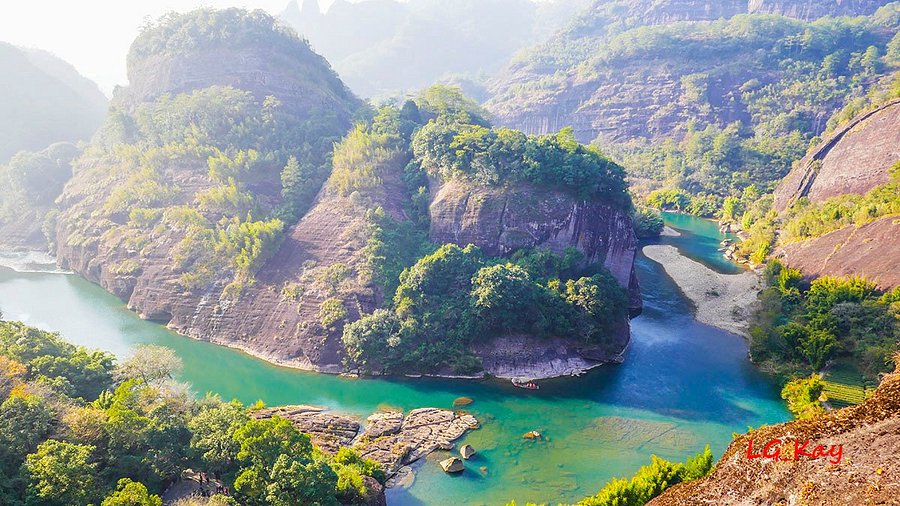
Wuwei Tianti Mountain.
Local Cuisine and Accommodation Nearby
When visiting the breathtaking Wuwei Tianti Mountain and its remarkable Tianti Grottoes, travelers are in for a delightful experience, not just in terms of stunning views and cultural treasures but also when it comes to local cuisine and accommodations.
Culinary Delights
The area around the Tianti Grottoes offers a taste of authentic local flavors that are sure to please any palate.
-
Local Street Food: Don’t miss the opportunity to sample local street food, especially the freshly prepared hot beans that vendors often sell near the grottoes. This simple yet delicious snack is a great way to fuel your explorations.
-
Gansu Cuisine: For a more substantial meal, venture into Wuwei City where you can find a variety of restaurants serving Gansu cuisine. Look for dishes like Beef Noodle Soup (牛肉面), which is famous in the region, and Dumplings (饺子) that are often filled with fresh local ingredients.
-
Cultural Restaurants: Consider dining at a local restaurant that specializes in dishes inspired by the area’s rich Buddhist heritage. Many places offer vegetarian options, reflecting the local customs, and you can enjoy meals surrounded by traditional decor that enhances the dining experience.
Comfortable Stays
After a day of exploring the grottoes and soaking in the stunning mountain scenery, you’ll want a cozy place to unwind. Fortunately, there are several accommodation options nearby.
- Wuwei Hotels: The city of Wuwei is home to a range of hotels catering to different budgets. Well-reviewed options include:
- Wuwei Jinghua Hotel: A comfortable mid-range hotel with modern amenities, making it an excellent choice for families and travelers looking for convenience.
-
GreenTree Inn Wuwei: Known for its friendly service and clean rooms, this hotel provides a good base for exploring the area.
-
Guesthouses: For a more intimate experience, consider staying at a local guesthouse. Many offer a chance to interact with local families and receive insights into the culture and traditions of the region.
-
Hostels: If you’re traveling on a budget, there are hostels that provide basic accommodations and a chance to meet fellow travelers. They often have communal spaces for socializing and sharing travel tips.
Final Thoughts
Your visit to Wuwei Tianti Mountain and the Tianti Grottoes can be enriched by indulging in the local cuisine and selecting the right accommodation. Whether you’re savoring the simplicity of street food or enjoying a hearty meal in a cozy restaurant, you’ll create lasting memories that complement the stunning natural and cultural beauty of this unique destination.
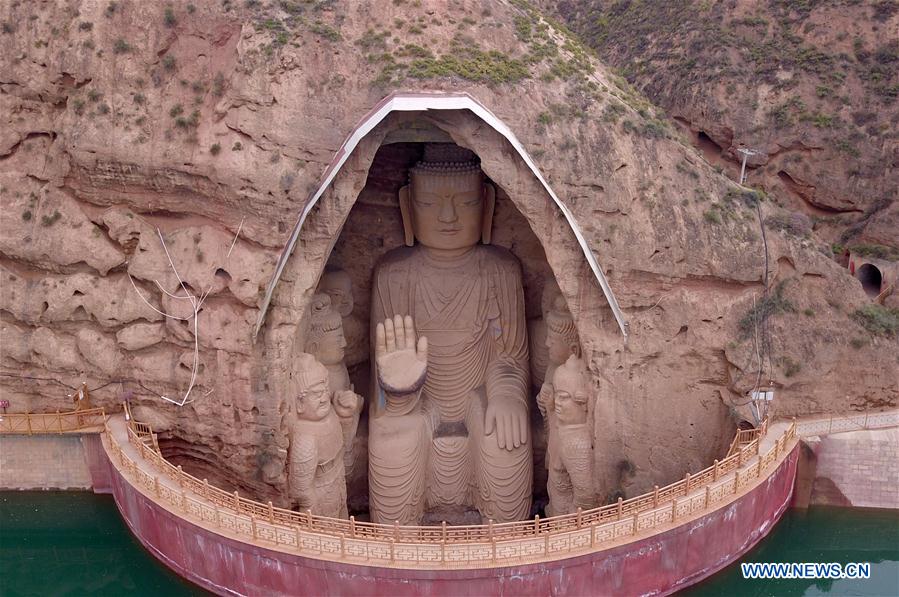
Wuwei Tianti Mountain.
Frequently Asked Questions
Frequently Asked Questions about Wuwei Tianti Mountain (武威天梯山)
-
What are the Tianti Grottoes, and why are they significant?
The Tianti Grottoes are a collection of rock-cut caves located on Tianti Mountain in Wuwei, Gansu Province. These grottoes are significant for their impressive Buddhist cave temples and magnificent rock-carved statues, some dating back to the Tang Dynasty. They offer a glimpse into ancient Chinese Buddhism and are a UNESCO-recognized cultural heritage site. -
How do I get to the Tianti Grottoes from Wuwei city?
The grottoes are approximately 50 kilometers south of Wuwei city. You can take a taxi or a local bus. Taxis are more convenient and can take around 90 minutes, while buses may take about 2.5 hours. Always check the latest schedule and availability, as services can vary. -
What are the opening hours for visiting the Tianti Grottoes?
The Tianti Grottoes are open 24 hours a day. However, it’s advisable to visit during daylight hours for the best experience and to ensure access to facilities. -
Are there any entry fees or tickets required?
Yes, there is a nominal fee for entry, which typically includes access to the grottoes and the Culture Relics Exhibit Hall. Ticket prices may vary, so it’s best to confirm at the entrance or check online before your visit. -
What should I wear when visiting the grottoes?
Comfortable walking shoes are essential, as there may be uneven terrain. Dressing in layers is recommended, as temperatures can vary throughout the day, especially in the mountainous region. Additionally, respectful attire is encouraged due to the religious significance of the site. -
Can I take photographs inside the grottoes?
Yes, photography is generally allowed in the outdoor areas and some grottoes. However, be mindful of any specific restrictions inside certain caves, especially those with religious significance or ongoing restoration work. -
Are there facilities available at the grottoes?
Basic facilities such as restrooms are available, and there may be small vendors selling snacks or drinks nearby. However, it’s a good idea to bring your own water and snacks, especially if you plan to hike or explore the area for an extended period. -
What’s the best time of year to visit the Tianti Grottoes?
The best time to visit is during spring (April to June) and autumn (September to November) when the weather is mild and the scenery is particularly beautiful. Summers can be hot, while winters may bring snow, limiting access to some areas. Always check the weather forecast before planning your trip.
Final Thoughts on Your Trip
As you wrap up your journey to Wuwei Tianti Mountain and the awe-inspiring Tianti Grottoes, take a moment to reflect on the treasures you’ve encountered. From the stunning rock-cut grottoes adorned with ancient Buddhist carvings to the serene mountain views that stretch as far as the eye can see, this destination offers a unique glimpse into the rich tapestry of Chinese history and culture.
The Tianti Grottoes, though lesser-known compared to their more famous counterparts, are a testament to the artistic and spiritual heritage of Buddhism in China. Each cave tells a story of devotion, resilience, and artistry that has withstood the test of time, even as nature has claimed parts of this historic site. It’s an experience that invites contemplation and respect for the artistry of the past.
Embrace the tranquility of the surroundings, perhaps while enjoying a local snack from a vendor or simply taking in the breathtaking scenery. Whether you’re a history buff, a spiritual seeker, or simply an adventurer at heart, Wuwei Tianti Mountain promises to leave an indelible mark on your travel memories.
As you depart, carry with you the serenity and inspiration of this remarkable place, and let it inspire your future travels. Wuwei Tianti Mountain is not just a destination; it’s a journey into the heart of China’s historical and cultural landscape. Safe travels, and may your adventures continue to unfold with wonder.